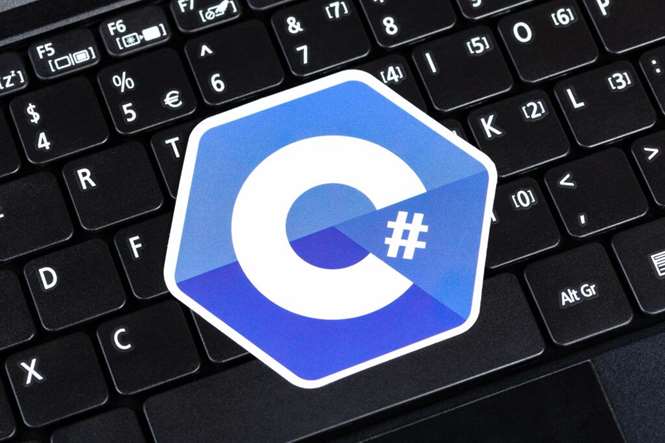Content
The server is another vulnerable component of your website application. While checking the server for vulnerabilities, you can take a top-to-bottom and end-to-end approach to ensure that you have covered all the components. While checking the permission and access list, also check for users who are no longer in the system and remove those accounts. These accounts could provide hackers with backdoor access to your website application.
- In the second case, what helps most is scanning for security vulnerabilities as early as possible in the development lifecycle.
- This risk category highlights data breaches, sensitive data exposure, and other vulnerabilities arising due to cryptographic failures.
- If you feel like you could use a web app security audit of your web application or a penetration testing report, be sure to contact Mobindustry.
- But remember to keep your logs clean from credentials or any sensitive data.
- The challenges presented in the WAHS program are derived from the iLabs environments of the other renowned EC-Council’s certification programs, especially Certified Ethical Hacker .
As shown below, the number of DDoS attacks have consistently grown over the past few years and are expected to continue growing. In cases where a file upload option is provided to the user, restrict the type of file being uploaded to only the expected type. Make sure to require that the file extension and the content of the file being uploaded are verified. In addition, perform a scan on the uploaded file to check for any malicious content.
If this is not restricted or the input is not scrutinized, threat actors can send malicious requests or download critical or sensitive files from your server. It is an attack that targets authenticated users and leverages this web vulnerability to exploit an authenticated user’s trust in a web application. The process of fetching data from a third-party website is known as a Cross-Site Request.
Services
Chances are that when it is all said and done, there will be many applications that are either redundant or completely pointless. This inventory will come in handy for the steps that are to follow too, so take your time and make sure to get every single application. If your website was affected by the massive DDoS attack that occurred in October of 2016, then you’ll know that security is a major concern, even for large DNS companies like Dyn.
Blocking your former employees and changing passwords after a developer leaves the company is another web application security best practice. According to Security Magazine, a cyber attack takes place somewhere in the world every 39 seconds. As hackers become hungrier for people’s sensitive data and the number of cyberattacks increases, it’s vital to ensure reliable protection of your web app. Prioritizing web application security must be an essential part of your cybersecurity strategy.
Why care about your web app’s security?
Essentially, a WAF manages all aspects of real-time monitoring of your web app’s security aspects like session management. This means it blocks potential application layer attacks in real-time, such as DDoS attacks, SQL injection, XSS, and CSRF attacks. When you use SSL/TLS encryption, you use a safer version of the HTTP protocol, HTTPS, and secure all web application security practices communications with your visitors. Without SSL-encrypted connections, both websites and applications have weak encryption that can jeopardize the session management and overall security system. See how HTTP vs HTTPS compares and how having an SSL can benefit your site. When someone uses your web application, they may disclose sensitive information.

Use an encryption service (e.g. Let’s Encrypt) or buy an SSL certificate to redirect all your HTTP requests to HTTPS. According to Chief Executive, 90% of all security breaches are made possible because of human error. Monitoring your employees will allow you to quickly find out what action on which computer compromised your system, since everything will be on the record. Use basic technologies like HTTPS and HSTS encryption, but don’t stop there.
The challenges presented in the WAHS are far more advanced and extensive compared to other certifications enabling the candidate to evaluate and resolve critical issues at every phase. The process of intentionally altering the data in a file via unauthorized or unethical means is known as file tampering. The file can be changed, deleted, modified, https://globalcloudteam.com/ or replaced with a new file or a malicious file, which, when executed, could cause possible damage to the system. Reporting findings, risks, and conclusions to the management and other decision-makers. ‘Break the Code’ challenge is for ethical hacking beginners and professionals who want to test their skills against various levels of threats.
Cloudflare
Along with these practices and processes, you can engage a qualified team to validate and certify the posture of your work using various testing methods. Together, these best practices will go a long way in securing new projects against cyberattacks and creating a sense of trust with customers. Using the path input directly in the code can lead to risks such as local file inclusion, remote file inclusion, server-side request forgery and unvalidated redirect and forward.

A web application is a software program that runs on your web server (meaning it’s not limited to individual devices like traditional desktop software). Web application security encompasses everything relating to protecting your web applications, services, and servers against cyber attacks and threats. This entails everything from the procedures and policies you have in place to the technologies you deploy to mitigate vulnerabilities that bad guys can exploit.
It is also helpful in prioritizing the identified vulnerabilities and devising proper mitigation strategies based on this result. With the Web Application Hacking and Security program, you can put your abilities to the test and learn how to hack apps and secure web applications. The WAHS course is ideal for everyone, whether you are a beginner or a seasoned ethical hacker. Each section of the challenge pushes you to test your skills as you encounter SQL Injection, Security Misconfigurations, Cross-site Scripting, and various other concepts through which you need to hack your way. With WAHS, you also get to learn Advanced Web Application Penetration Testing, Advanced SQL Injection, XSS, Network Scanning, etc.
UPDATE The Driven Hunt Hack Free Resources Generator
Like any software, web applications also have bugs and defects for a few reasons. Firstly, software engineers are human, and everyone can make a mistake. Aside from this, modern web applications contain many external libraries that may have some faults.
In this article, we have discussed a lot of application vulnerabilities and tools to protect the apps. These are AWS security services we use at Codica, monitoring tools, feature-rich secrets, and more we mentioned above. These tools are all important, but you must balance each application and infrastructure part.
Log files are helpful to make changes to your application or its code. But following proper logging practices will ensure that you’re not storing sensitive data in log files directly accessible by anyone with physical access to your computer. Network security aims to protect the underlying networking infrastructure from unauthorized access.
The most common forms of cyber threats are SQL injection, Cross-Site Request Forgery , DDoS attack, broken authentication, Cross-site scripting , and Exploiting inclusion vulnerabilities. Before we go into details about the best security practices, let’s understand more about web application security. The security features form the central component around which the other attributes of the website are built. If you don’t acknowledge the worth of your sensitive data and safeguard it accordingly, cyberattackers will teach you the hard way. Not taking the necessary steps to guard your web application can result in massive service outages and downtime, leading to sales and revenue losses. Imagine an ecommerce store going down for hours due to a data breach — that could have a devastating effect on their business.
The Best Dark Web Websites You Won’t Find on Google
Many publicly available vulnerability scanning tools can help determine if you’ve made any obvious mistakes. In this article, we’ll consider such tools and steps you can take to secure your site. Planning and implementing penetration testing techniques, tools, and procedures.
Network as a Service
One of the best ways to check if your sensitive information is safe is to perform mock attacks. This is the key assumption behind penetration testing but penetration tests are just spot-checks. To fully and continuously evaluate your security stance, the best way is to perform continuous security exercises such asred team vs. blue teamcampaigns. In the second case, what helps most is scanning for security vulnerabilities as early as possible in the development lifecycle.
Ensure Secure Data Storage
The sheer number of open-source tools available makes it difficult to even figure out which ones a company’s code is using. And because each dependency is really just software that might have dependencies of its own, getting to the bottom of any of it is difficult. Existing tools and libraries are only secure as long as they are kept up to date. Maintainers of those tools may be diligent about patching new security vulnerabilities, but that won’t help if developers are still using older versions. Using existing tools is also useful for mitigating newly discovered security vulnerabilities, because maintainers of the tool and others in the community could step in to quickly patch the vulnerability. Developers who build their own tools, meanwhile, may have security holes that go undetected for a long time.
Combined with the requirements for SDLC integration and automation, this necessarily makes accurate automated application security testing the foundation of your AppSec program. While manual testing will always have its place, keeping up with automated dev toolchains and CI/CD pipelines requires integrated tools that can run automatically and quickly deliver feedback to developers. The 2021 Verizon Data Breach Investigations Report notes that as more businesses continue to migrate their operations to the cloud, attacks on web applications have come to represent 39% of all breaches. Traditionally, the approach to ensuring the security of web applications has been to develop first and test afterwards. However, with the recent increase in cybersecurity threats in the form of web application attacks, the traditional approach is no longer viable.
Keep your certificates and programs up-to-date and protect user data with multifactor authentication. To keep your data safe, understand the biggest risks your company faces when it comes to web applications. Identify specific weak areas in your operations and get a trusted third-party security service to help you follow best practices and create a workable solution. All the above types of penetration testing play an important role in application security best practices. It’s critical, then, to secure your web application development and monitor app security best practices and possible breaches.
